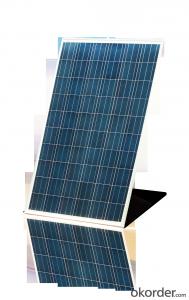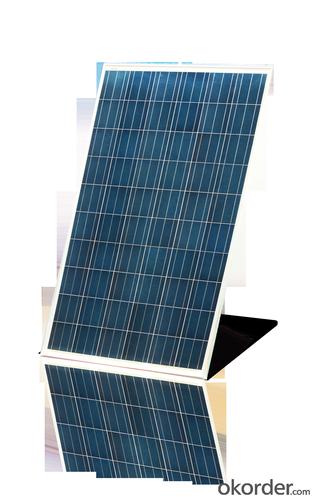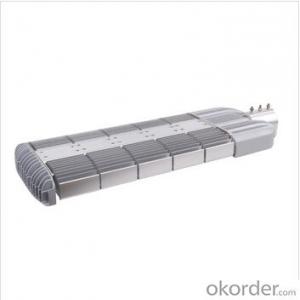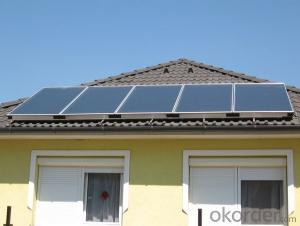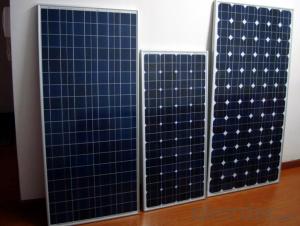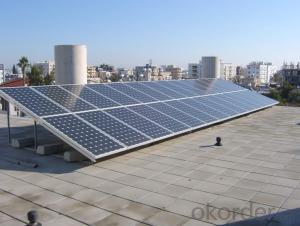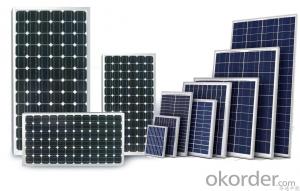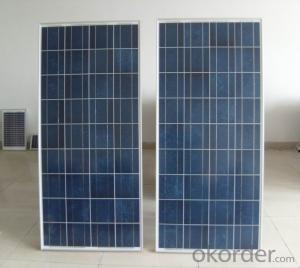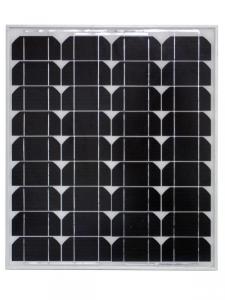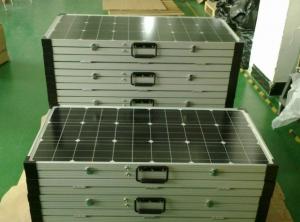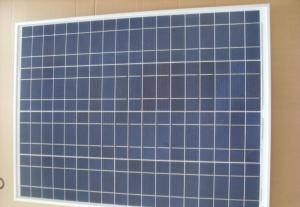Dual Poly Solar Panels 255W
OKorder Service Pledge
OKorder Financial Service
You Might Also Like
Product Description:
Details Of Polycrystalline Solar Panel
Product Description of Polycrystalline Solar Panel
EGing PV Solar Polycrystalline Series (250W—260W)
EGing Photovoltaic Technology is a leading internationally recognized vertically intergrated solar PV company.It started silicon ingot production in 2003 and has achieved fast and steady growth since then.EGing has raised capacity to 1GW by the end of 2011 and successfully listed on the Shanghai stock Exchange.With global brand recognition,EGing PV is credited by its global customers a reliable partner.
Characteristics of Polycrystalline Solar Panel
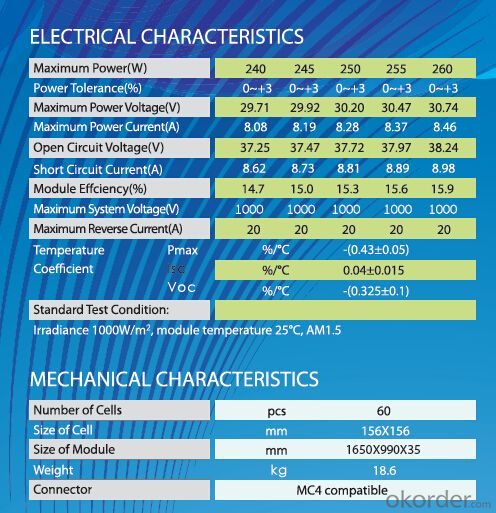
performance tolerance: 0~+3%;
product guarantee: 10 years
Junction Box: EG-TL-BOX026
Connector: Original MC4 or MC4 compatible
EGing label: 80*120mm
Cells: 156*156mm, 220um+/-20um.
Series No.: a series number will be stuck to the module underneath the glass. This barcode is the serial number of the module.
Frames: Aluminum, 1650*990*35mm. The frames of all delivered modules within this contract must be identical.
Frames – mounting holes: All modules delivered within this contract, will have the holes for mounting of the modules at the same planned intervals.
Glass: All modules delivered within this contract will have the same type of glass in functional and optical regards.
Size: 1650*990*35mm
- Q: I'm looking for a solar panel that has something you can plug thigs into, I don't know let's say grow lights. I want something that these lights can plug directly into and I can't find any online. If there is any I would like to know of the cheapest and best quality, I know that's an oxymoron but still. The lights are 600 watts so I need something somewhat strong. Thanks
- Homemade okorder
- Q: What is the difference b/w them which one is better .
- In the practical sense, the differences are trivial. I'd buy on price per watt, unless space is at a premium (it isn't for most installations).
- Q: Can solar panels be used in combination with wind turbines?
- Yes, solar panels can be used in combination with wind turbines. This combination is known as a hybrid renewable energy system. It allows for a more reliable and efficient generation of electricity as the two sources complement each other. Solar panels generate electricity during the day when there is abundant sunlight, while wind turbines generate electricity when there is sufficient wind. By combining these two sources, the system can produce electricity continuously, regardless of the time of day or weather conditions.
- Q: I had an idea for new parabolic solar panels shaped like horseshoes. They can install them outside buildings facing the equator. They could angle them from the ground based on how many degrees latitude the location and rotate them according to seasonal changes. The disadvantage of photovoltaic panels is that they are not all capable of receiving direct sunlight. That is the quintessential reason I believe horseshoe solar panels are more effective than flat rectangular ones. One side could function in the morning; the middle could perform at midday; and the other could operate during the evening. That method seems more sensible than hourly positioning. I'm certain horseshoe panels could save and produce more electricity. A football stadium, shopping mall, or outlet center would be a fantastic place. What do you think?
- Sorry to be a prophet of doom again but the fault in the system is that only a small portion of the cell is used at any time of the day, given the high cost of solar panels this is not financially viable. Why not just have a small motor to turn the panel to face the sun, that's been done and it works.
- Q: The average solar panel produces 0% of the energy that is put into it. What is happening to the other 90%? Is it being reflected or is it being obsorbed by materials that are not a part of the solar cell? Is it possible to one day have near 00% efficient solar cell technology?
- Mainly due to reflection (micro-structuring of the surface helps here), incorrect wavelength of the light (the panel is only sensitive to a certain wavelength range) and heating of the panel (due to the incident light/thermal radiation). The remainder is either reflected or absorbed by the cell and re-emitted as heat. Absorption by e.g. the glass panel is slight (a few %), as is absorption/reflection by the necessary surface contacts (again, a few %). Higher efficiency is possible, but brings its own drawbacks (like higher cost). You could now go into two directions: - high efficiency cells/panels with (likely) higher cost and complexity for mounting (like lens or mirror based systems, aka concentrator systems, that increase the light level on the cells in order to increase efficiency) - low cost systems (cheap as dirt) that will allow you to cover every surface of a building, efficiency is less important if you can compensate by a much larger covered area As to the efficiency limit: there is a theoretical limit (from thermodynamics - don't ask me how or why) in the range of 30...40%, depending on which publication you want to believe in.
- Q: I was trying to look online for solar panels for my home to take some of the strain off of using oil and electricity but I find it very hard to understand exactly how they are used.Like one that I looked up is 00 watts.....is that like a light bulb watt? How many things can that power? Is it really cheaper in the long run because the panels are very expensive?If anyone has web sites that can explain this to me I would appreciate a link, or anyone to answer part of my question.
- Solar panels produce low voltage direct current electricity. To be used in a home that electricity must be stored in batteries and converted to 20-240 volts 60 hertz AC (alternating current). And its frequency must be synchronized to the electricity supplied by the power company. A 00 watt solar panel produces 00 watts of power, enough to power one 00 watt light bulb. To generate enough power to power a home, the solar panel must be capable of producing at least 500 to 2000 watts per hour (.5/2.0 KW/hrs) And you're quite correct, it's an expensive proposition to install a solar panel system... and it should be installed by experts.
- Q: what are the main minerals that are used in making solar panels. and where in the world are those minrelas usually found
- Heating panels have aluminum for the frame, glass for the top, copper pipes running through them, and possibly some plastic parts. The raw materials are easily obtained. Copper is the most difficult to get probably, but it's not all that rare, since we used to make pennies out of it. A solar electric panel is similar, with the copper used for wires and interconnect instead of pipes. The actual solar cells commonly used are almost completely pure silicon, which is abundant worldwide. There are traces of other elements in the silicon like boron, arsenic or phosphorous - these are also inexpensive, and easy to get.
- Q: I am in need of solar panels and the batteries that I can store the energy in. I need to be able to run a laptop, cell phone, and LED lights from it. When I research I see all sorts of options with regards to watts, VMPs, and AMPs. I also see that I may need a controller, an inverter, and various other components. Can anyone help me through these terms and what i need to know in order to efficiently generate and store the electricity. Thanks
- Okay well solar panels only work under sunlight and it saves alot of electricty as compared to your normal switches.And it also saves money=D.One thing though...it only works under sunlight...remember this fact. Power storage simply means a device which can store power. Well a generator stores power and a power station too!! Otherwise they can't flow through our electric current..... So for power usage simply is like on the fan/lights/mobile/computers/modems/e.t.c are considered as power usage as you are using the power=P Well hope this information helps you!
- Q: Are there different types of solar panels?
- Yes, there are different types of solar panels. The most commonly used types include monocrystalline, polycrystalline, and thin-film solar panels. Each type has its own advantages and disadvantages in terms of efficiency, cost, and appearance.
- Q: i was reading the popular science magazine and i saw that they might make a Sun Powered it Absolutely NOT possible to make a car with a Solar Panel? I dont see any harm in making it..
- Sailboats typically run on wind; hence, Sailboat. I haven't read your article on it though; but, I would think that the solar power would be for the battery powered stuff and possibly a little motor for it. For a car... There are competitions, right now for solar cars. Only they are very light and don't really go that fast. The panels tend to be large and weight a bit more than one would think. I don't understand why they can't simply make a car generate power simply by the rotation of the wheels itself. They could take a hybrid, take out the gasoline portion and it would simply recharge the batteries by the friction of the turning wheels.
Send your message to us
Dual Poly Solar Panels 255W
OKorder Service Pledge
OKorder Financial Service
Similar products
Hot products
Hot Searches
Related keywords
